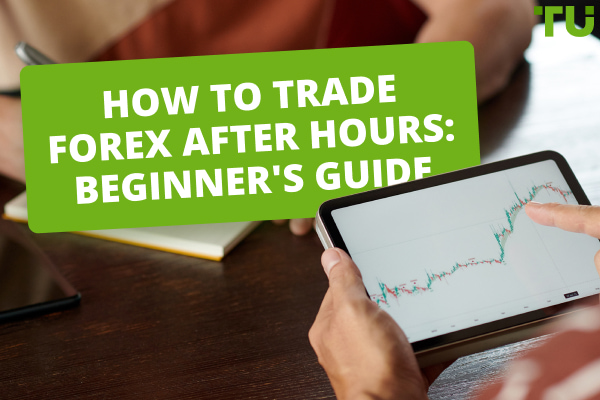What Is Risk Management And How Do I Implement It In My Trading?
Ways to implement risk management into trading:
-
Set a stop-loss
-
Use position sizing
-
Diversify your portfolio
-
Take breaks
-
Regularly review your risk management strategy
-
Consider the psychology of trading
Risk management is one of the most important aspects of trading. By effectively managing your risk, you can protect your capital and increase your chances of success.
In this article, we will discuss the basics of risk management in trading. We will cover the following topics:
-
What is risk management?
-
Why is risk management important?
-
How to implement risk management in your trading
-
Additional tips for risk management
Risk management is the process of measuring the size of your potential losses against the original profit potential on each new position within the financial markets.
What is risk management?
Risk management is the process of identifying, assessing, and controlling risks. In the context of trading, risk management is the process of limiting the amount of money you can lose on a single trade.
Why is risk management important?
Risk management is important because it can help you:
-
Protect your capital: By limiting your losses, you can protect your capital and avoid going broke
-
Increase your chances of success: By taking on less risk, you can increase your chances of making a profit over time
-
Stay in the game: By avoiding large losses, you can stay in the game and continue to trade
Types of risks in Forex trading
Forex trading is a risky activity, and it is important to understand the different types of risks involved before you start trading. Here are some of the most common types of risks in Forex trading:
-
Market risk: Market risk is the most common type of risk in Forex trading. Market risk is the risk that the market will move against you, resulting in a loss. This can happen for a number of reasons, such as changes in economic data, political events, or investor sentiment
-
Liquidity risk: Liquidity risk is the risk that you will not be able to close your position at the price you want due to lack of liquidity. Liquidity refers to the ease with which an asset can be bought or sold. If an asset is illiquid, it may be difficult to find a buyer or seller at the price you want
-
Counterparty risk: Counterparty risk is the risk that your counterparty, the person or institution you are trading with, will default on their obligations. This can happen if the counterparty goes bankrupt or is unable to meet their financial obligations
-
Settlement risk: Settlement risk is the risk that the settlement of your trade will not occur as expected. Settlement is the process of transferring the assets involved in a trade from one party to another. If there is a problem with the settlement process, it could result in losses for you
-
Operational risk: Operational risk is the risk of losses due to errors or fraud by your broker or other financial institution. This can happen for a number of reasons, such as human error, technological problems, or malicious intent
How to implement risk management in your trading?
There are a number of things you can do to implement risk management in your trading. Here are a few tips:
-
Set a stop-loss: A stop-loss is one of the most important tools for risk management. A stop-loss order automatically closes your position if the market moves against you by a certain amount. This will help you limit your losses if your trade goes wrong
There are a number of different ways to set stop-losses. One common method is to set a stop-loss at the breakeven point. This means that you will only lose the amount of money you invested in the trade. Another common method is to set a stop-loss at a certain percentage of your entry price. For example, you might set a stop-loss at 2% below your entry price.
-
Use position sizing: Position sizing is the process of determining how much money you should risk on each trade. A good rule of thumb is to risk no more than 1% of your account balance on a single trade. By limiting your risk to 1% of your account balance, you can protect your capital and stay in the game even if you make a few losing trades
-
Diversify your portfolio: Diversification is the process of investing in a variety of assets. This will help reduce your risk if one asset performs poorly. For example, if you invest in stocks, you could diversify your portfolio by investing in stocks from different industries and countries
-
Take breaks: It is important to take breaks from trading when you are feeling emotional. When you are stressed or tired, you are more likely to make poor trading decisions. If you find yourself feeling emotional, take a break from trading and come back to it later when you are feeling calmer
-
Regularly review your risk management strategy: As you gain experience, you may want to make changes to your risk management strategy. For example, you may want to change the size of your positions or the methods you use to set stop-losses and take-profits. Regularly reviewing your risk management strategy will help you ensure that it is still appropriate for your current needs
-
Consider the psychology of trading: Emotions can play a big role in trading. When you experience strong emotions, such as fear or greed, you may make irrational decisions that can lead to losses. To avoid this, it is important to learn how to control your emotions during trading. One way to do this is to develop a trading plan and stick to it, even when you are feeling strong emotions
In addition to the tips above, here are a few other things you can do to improve your risk management:
-
Use a risk management calculator: There are a number of online calculators that can help you determine how much to risk on each trade
-
Track your progress: Keep track of your wins and losses to see how your risk management is working
-
Get feedback from a mentor: A mentor can help you develop a risk management plan that is right for you
Calculating Stop-Loss
There are several ways to calculate a stop-loss. One of the most common methods is to use percentage of risk. This method involves determining how much money you can afford to lose on each trade, and setting your stop-loss at that percentage of your position.
For example, if you can afford to lose 2% of your deposit on each trade, and you open a position for $1000, your stop-loss should be set at $20.
Another way to calculate a stop-loss is to use technical analysis. Technical analysis is the process of analyzing historical data and forecasting future market movements. Some technical indicators can be helpful for identifying support and resistance levels that can be used to set stop-losses.
For example, you could set a stop-loss at a support level that you believe will prevent the price from further declining.
Calculating Take-Profit
There are several ways to calculate a take-profit. One of the most common methods is to use percentage of target. This method involves determining how much profit you want to make from each trade, and setting your take-profit at that percentage of your position.
For example, if you want to make 5% profit from each trade, and you open a position for $1000, your take-profit should be set at $50.
Another way to calculate a take-profit is to use technical analysis. Technical analysis is the process of analyzing historical data and forecasting future market movements. Some technical indicators can be helpful for identifying resistance levels that can be used to set take-profits.
For example, you could set a take-profit at a resistance level that you believe will prevent the price from further rising.
Calculating Position Size Based on Percentage of Risk
To calculate position size based on percentage of risk, use the following formula:
Position Size = Risk / Percentage of Risk
For example, if you can afford to lose 2% of your deposit on each trade, and you have a deposit of $1000, your position size should be $20.
Position Size = 200 / 2%
Position Size = $20
Calculating Position Size Based on Percentage of Target
To calculate position size based on percentage of target, use the following formula:
Position Size = Target / Percentage of Target
For example, if you want to make 5% profit from each trade, and your target is $100, your position size should be $20.
Position Size = 100 / 5%
Position Size = $20
Choosing a Position Size Calculation Method
The choice of position size calculation method depends on the individual needs and preferences of the trader. It is important to research various methods and choose the one that works best for you.
Here are a few tips for choosing a position size calculation method:
-
Consider your goals and risk tolerance: Determine how much money you can afford to lose, and choose a method that is appropriate for your risk tolerance
-
Use various methods: Don't rely on a single method. Use various methods to get a more complete picture of the market and reduce risk
-
Regularly review your calculations: As you gain experience, you may need to adjust your calculations. Regularly review your calculations to make sure they are still right for you
Conclusion
By following the tips in this article, you can develop a strong risk management foundation that will help you protect your capital and increase your chances of success in the markets.
FAQs
How do you set risk management in trading?
Set a stop-loss, use position sizing, diversify your portfolio, and take breaks.
What is risk management and how to do it?
Risk management is the process of limiting your losses in trading. You can do this by setting stop-losses, using position sizing, and diversifying your portfolio.
What is the 1% rule in trading?
The 1% rule in trading is a risk management guideline that states that you should never risk more than 1% of your account balance on a single trade. This rule is designed to help you protect your capital and prevent you from blowing up your account.
What are 5 risk management strategies?
Here are 5 risk management strategies in short:
-
1
Use stop-loss orders: A stop-loss order is an order to automatically close a trade if the price moves against you by a certain amount. This helps to limit your losses if a trade goes wrong
-
2
Use position sizing: Position sizing is the process of determining how much money to risk on each trade. A good rule of thumb is to risk no more than 1% of your account balance on a single trade
-
3
Diversify your portfolio: Diversifying your portfolio means investing in a variety of different assets. This helps to reduce your risk if one asset performs poorly
-
4
Use leverage carefully: Leverage can amplify your profits, but it can also amplify your losses. Be careful when using leverage, and make sure you understand the risks involved
-
5
Have a trading plan: A trading plan is a set of rules that you follow when trading. It should include your risk management strategies, as well as your entry and exit criteria
By following these risk management strategies, you can help to protect your capital and increase your chances of success in trading.
Team that worked on the article
Alex Smith is a professional day trader for a proprietary trading firm within the foreign exchange (forex) and crypto markets. His area of expertise is day trading and swing trading within the 15min-4hr time frames for both the London and NY open. At Traders Union, Alex is a firsthand experience expert, providing explanatory videos and tutorials on brokerage companies, how to open a trading account, how to withdraw profit, etc.
Dr. BJ Johnson is a PhD in English Language and an editor with over 15 years of experience. He earned his degree in English Language in the U.S and the UK. In 2020, Dr. Johnson joined the Traders Union team. Since then, he has created over 100 exclusive articles and edited over 300 articles of other authors.
The topics he covers include trading signals, cryptocurrencies, Forex brokers, stock brokers, expert advisors, binary options. He has also worked on the ratings of brokers and many other materials.
Dr. BJ Johnson’s motto: It always seems impossible until it’s done. You can do it.
Mirjan Hipolito is a journalist and news editor at Traders Union. She is an expert crypto writer with five years of experience in the financial markets. Her specialties are daily market news, price predictions, and Initial Coin Offerings (ICO). Mirjan is a cryptocurrency and stock trader. This deep understanding of the finance sector allows her to create informative and engaging content that helps readers easily navigate the complexities of the crypto world.









